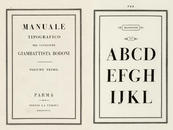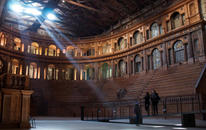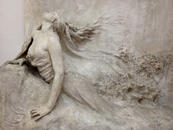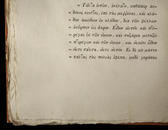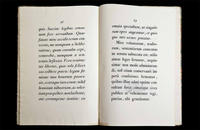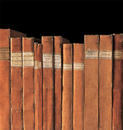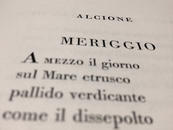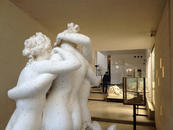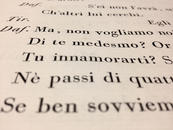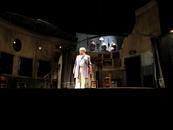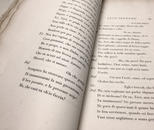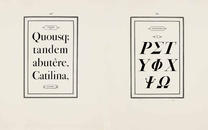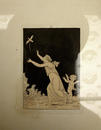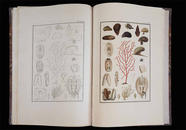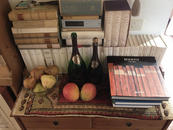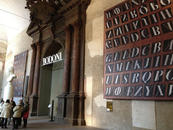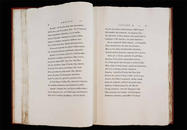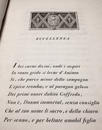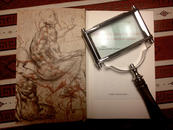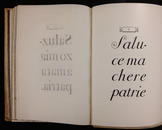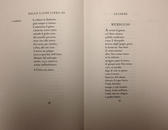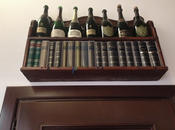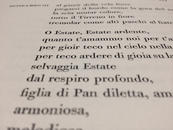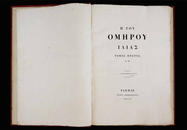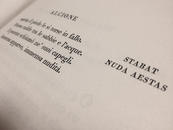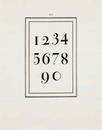A few, isolated and desolate fools
Recently, I spoke with a colleague, Chiara Grandesso, about the state of our industry. Our discussion didn’t have encouraging results and we concluded that it is difficult to define ourselves professionally. We feel a bit ashamed to be called “graphic designers.”
During the days following our encounter, I tried to figure out the reasons for this sad turn of events, since at the beginning of our careers to call ourselves “graphic designers” (or be labeled it by others) was an honor, a seal of nobility. My first thought was that the root cause of the downturn is the lack of a true “graphic design school.” But I told myself that it could not be just that. In Italy, many professions lack a proper school of their own, but few have suffered a collapse of credibility comparable to ours. I then analyzed the so-called “technological progress,” which generated a deadly shockwave affecting generations of graphic designers after mine, and that has made a clean sweep of the approach of artistic craftsmanship that had characterized, and dignified, our craft for a large part of the 1900s. In fact, poorly understood “technological power” makes man helpless to thought, research, dialectics, consequences, personal depth, the excavation of the past, and more generally, to culture (a boring, profitless monster). Poorly understood “technological power” that makes people deaf and therefore dumb. But this isn’t enough to justify such a meltdown. Not all graphic designers were taken over by the cruel forces of modernity.
I return to a symbolic phrase, I believe of Abraham Lincoln: “If I had three hours to cut down a tree I would spend two sharpening the ax,” which implies a more fundamental misunderstanding related to our profession. Concretely carrying out one’s profession is only about a third of our lives. But a true graphic designer is always a graphic designer, and it's only when he’s not working, away from the hectic hustle and bustle of “doing,” does he have the ability to “sharpen” his mind (the ax). It's not the guy who punches a time clock for eight hours that "does" his job. A graph designer “is” a graphic designer (as an artist “is” an artist – and doesn’t “do” the artist). A graphic designer is such during the canonical eight hours obviously, but also during the other eight waking hours of leisure and recreation and even later, when he dreams. Always.
We are surrounded by graphic design, even to the lowest rank. It’s therefore normal that a graph designer’s mind is always at work. He must fight against the ugliness and stupidity but also digest them, assimilate them, because you learn from contrary ways of doing things, if supported by an adequate critical apparatus. A graph designer should obviously look for the beauty and dwell on it, but not only: he must overcome fatigue, because this is the only way to succeed. And here is another misconception. It sounds obvious to be able to dwell on beauty rather than stupidity. But the opposite is true. Beauty is not easy. It looks easy because we tend to trivially imagine with a face and body of a woman in the flesh, or portrayed a myth. But beauty is far more than a collection of desirable statues. I speak of beauty as a concrete manifestation of the good, as a creative and expressive force, the key concepts of aesthetics and ethics (here coinciding), universal values reproducible on a daily basis at many levels, at work, in personal relationships, in social work. But, and here’s the catch, to receive beauty it has to go through a dialectical confrontation with reality, with the consequent risk of misunderstanding and even the risk of feeling a bit stupid. Beauty, real beauty, doesn’t provide answers, but generates questions. It can leave you dumbfounded, questioning whether you haven’t fully understood...
Stupidity - which is the opposite of beauty - is understood effortlessly by everyone, at first sight. Stupidity makes you feel smart, reassured; it’s often followed by an opinionated but precise phrase: I already know… Therefore stupidity is dominant and profitable: it’s convenient, it’s recognizable, it offers answers and is understood by the masses. It makes us feel warm and good company. Beauty is based on questions, doubt, insecurity, precariousness, depth and mystery. It appeals to a few, isolated and desolate fools.
And therefore the graph designer (especially if he is in advertising?) Shouldn’t he satisfy the general public? It’s therefore not correct to bypass the stupidity, confusion, clichés, stock phrases and previously established models? Of course: one can’t ignore “common sense.” But does it really do any good to limit oneself to merely add a label without thinking and without a grain of substance to his seal this gap?
There is another way to carry out this profession, challenging oneself day after day: looking for, and desiring to find what is not yet known, without fear of what others think; asking questions for the sake of asking them, regardless of finding answers; having fun experimenting mentally, against simplification, standardization and the already known, cultivating a critical independent judgment and accepting peacefully to be judged by anyone, even by people don’t understand these efforts in the least and expect them to be completely irrelevant to the final outcome (the job for which you are paid). Those who don’t question view questioning folk as foolish, suspicious or even dangerous. I believe I have sketched the outlines not necessarily of a group of professionals, but of a few, isolated and desolate fools.
I want to close with beauty addressing something else, my visit with Chiara on January 12th (a typical cold winter day in the lower Po valley), to the art exhibit that Parma had dedicated to her hero: Giambattista Bodoni. The contradictory sense of the indefinable sense and profound peace mixed with erotic desire I experienced standing before the masterpieces of Bodoni, those almost musical folios from the large white sails and delicate handmade paper embroidered with calibrated and very precise characters blacks ... have something of incomparable. After more than two months I continue to dream and to desire those bound pages. A dream of the color ivory in perfect harmony between content and voids, which favors a natural rhythm precluded to us humans. The Garden of Eden of culture, wisdom, beauty and hope. Those pages with those huge, pure margins scream “pre-existence” to me. And peace, serenity, simplicity, silence, but also momentum, strength, passion, courage. Never have I longed to “immerse myself” into something (Although this madness should, perhaps, be part of the baggage of the precarious craft of the unmentionable?).
26/03/2014 Filippo Maglione

